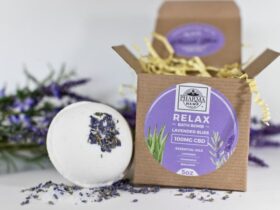Wooden pins are small pieces of wood that are used as a fastener in various pieces of clothing. They come in a variety of shapes and sizes, and can be used in a variety of ways. They are most commonly used in sewing, but can also be used in other crafts. Wooden pins are easy to work with, and are often the fastest way to fasten pieces of clothing together. They are also the most durable type of fastener, and can be used multiple times without breaking.
Different types of wooden pins
There are many types of wooden pins, and each has its own unique features that can make it perfect for a certain application. Some pins are designed for use in fabric and other materials, while others are designed for use in wood.
Some wooden pins are designed for use in fabric and other materials, while others are designed for use in wood.
Some of the most common types of wooden pins include clothes pins, picture pins, and quilt pins. Clothing pins are especially useful for holding clothes in place while you are sewing or quilting, and picture pins can be used to hold photos in place while you are hanging them on the wall.
Other types of wooden pins include the pushpin, the toggle bolt, and the T-bar. The pushpin is a standard, everyday pin that is used to hold paper down or to fasten pieces of fabric together. The toggle bolt is a type of wooden pin that is made from two pieces of wood that are connected by a hinge. When the toggle bolt is closed, it forms a secure connection between the two pieces of wood. The T-bar is a type of wooden pin that is used to hold fabric in place or to fasten other pieces of wood together.
Benefits of using wooden pins
When it comes to hair, there are a few key things that you want to make sure of. One of those is that your hair is staying in place. One way to make sure of that is by using wooden pins.
Wooden pins are a great option because they are affordable, they are reusable, and they are easy to use. When you use wooden pins, you are ensuring that your hair is staying in place, and that it is not going to fly all over the place when you are trying to style it.
Wooden pins are also a great option because they are eco-friendly. When you are using wooden pins, you are not using any harmful chemicals, and you are not damaging your hair. Additionally, wooden pins are easy to clean. If you are having a hard time getting your hairpins out, you can simply soak them in a solution of warm water and soap.
Finally, wooden pins are a great option because they are durable. If you are using wooden pins, you are not going to have to worry about them breaking. Additionally, if you do happen to break a wooden pin, you can simply replace it.
How do wooden pins work?
Wooden pins are one of the most popular types of pins because of their easy-to-use and practical design. Wooden pins are made from a piece of wood that is long and thin, and is usually round in shape. The pin’s head is usually made from metal, and the pin’s shaft is made from wood.
When you need to use a wooden pin, you first need to find the right size. The size of a wooden pin is measured in millimeters, and the smaller the number, the smaller the pin. Wooden pins that are smaller than 0.8 mm are usually used for sewing, while pins that are bigger than 1.6 mm are used for hair styling.
Once you have found the right size, you need to find the right type of wooden pin. There are two main types of wooden pins- straight pins and bent pins. Straight pins have a head that is straight, and a shaft that is bent. Bent pins have a head that is bent, but the shaft is straight.
When you are using a wooden pin, you should always hold it by the shaft. You should also hold the pin by the head, so that it doesn’t touch the fabric. You should place the pin close to the fabric, but not so close that you puncture the fabric. You should then push the pin into the fabric, and hold it there while you pull the fabric tight.
Types of wooden pins
Wooden pins come in a variety of shapes and sizes, making them perfect for a variety of sewing projects. Whether you’re sewing a shirt or a skirt, a wooden pin is a great way to hold your fabric in place while you sew.
With a variety of sizes and shapes, wooden pins can be used to hold fabric in place in a variety of ways. For example, you can use a wooden pin to hold fabric in place while you sew seams together. You can also use a wooden pin to hold fabric in place while you sew stripes or other patterns.
In addition to holding fabric in place, Wood pins can also be used to fasten fabric together. For example, you can use a wooden pin to fasten fabric together at the hem of a skirt. You can also use a wooden pin to fasten fabric together at the neck of a shirt.
Whatever your sewing needs, be sure to have a few wooden pins on hand. They’re a great way to keep your projects moving forward without having to fuss with pesky thread.
How to use wooden pins
When you’re crafting, it’s always helpful to have a few wooden pins around. Wooden pins are perfect for things like attaching fabric to a garment, and they’re also great for fastening quilt blocks together. Here’s how to use wooden pins:
1. Choose the right kind of wood. Not all woods are suitable for use as pins. You want pins that are both strong and flexible, like oak.
2. Assemble your pins. You’ll need a handle, a head, and a shaft. The handle should be the same size as the head. The head should be the same size as the shaft.
3. Make the head. Cut a small hole in the center of the head, and then turn it so that the hole is facing down. Tap it a few times with a hammer to make it slightly flattened.
4. Make the shaft. Cut a piece of wood that’s about the same length as the head, and then shape it into a rounded shape.
5. Assemble the pins. Insert the head into the hole in the shaft, and then press it down so that it’s snug. Then attach the handle to the end of the shaft.
6. Test the pins. Push them gently into the fabric, and make sure that they hold the fabric in place. If the pins feel too stiff, you can add a little bit of WD-40 to the shaft before assembly.








Leave a Review